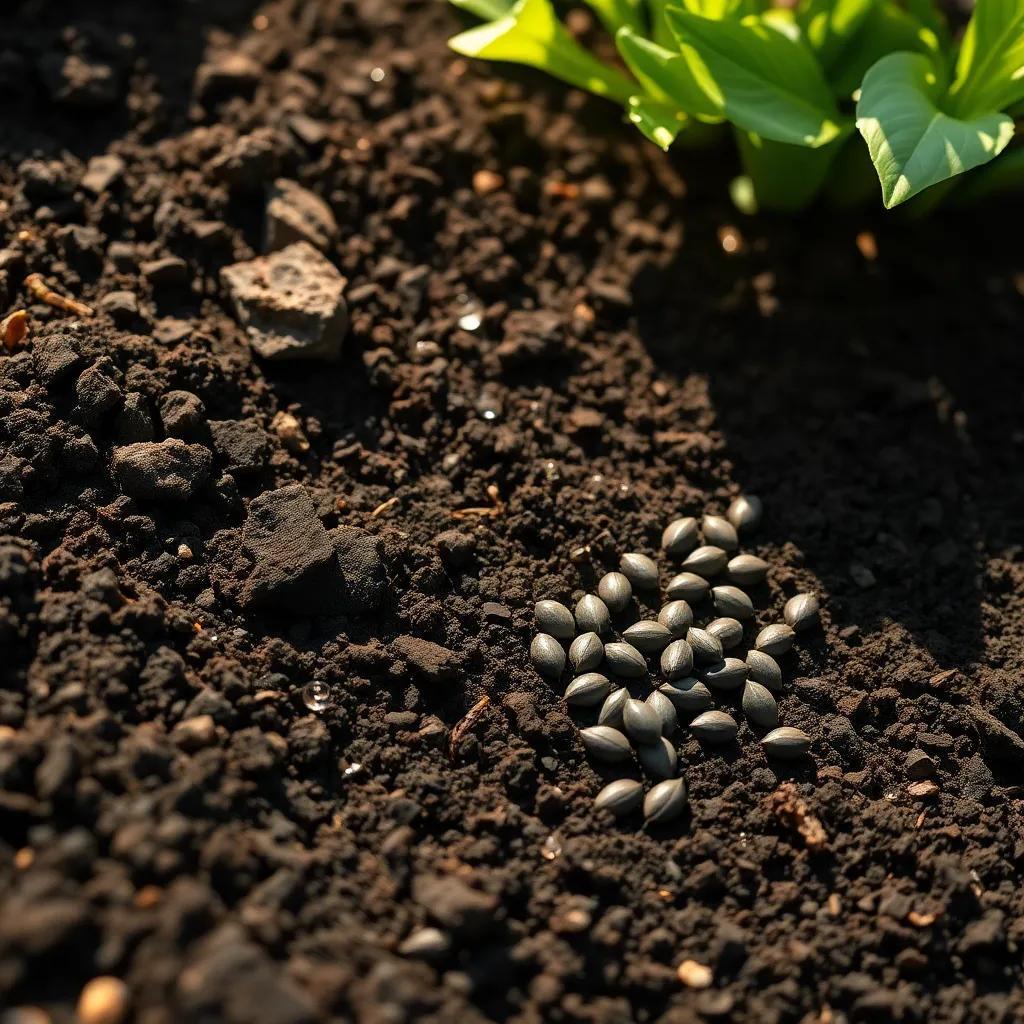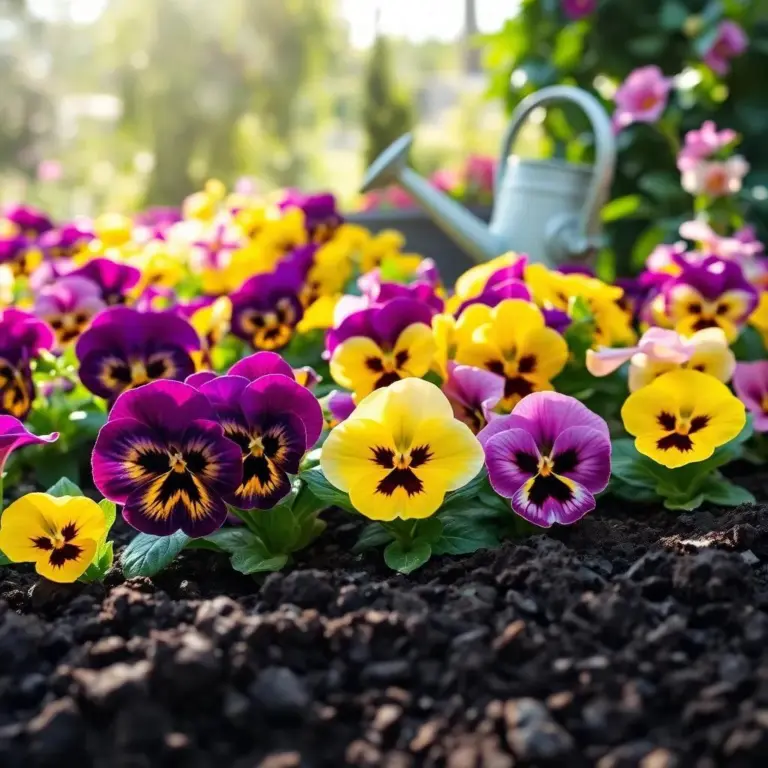If you’ve ever wanted to fill your garden with beautiful, colorful pansies, you’re in for a treat! Growing these charming flowers from seeds is easier than you might think, and I’m here to share my tips and tricks! From preparing the soil to extending their blooming period, let’s dive into the delightful world of pansies and make your garden the envy of the neighborhood!
Preparing Your Soil for Pansy Seeds
Getting your soil ready for pansy seeds is like making the perfect cake batter; you want to mix the right ingredients to create a delicious outcome! If you want your pansies to thrive, you need to provide them with the best starting point possible. So, let’s dig in and prepare that soil!
- Choose the Right Location: Pansies love a spot with good drainage. You want to avoid areas where water tends to pool. Ideally, find a spot that gets some morning sun—this will help keep your pansies happy and healthy!
- Test Your Soil: Just like tasting your cake batter, testing your soil is important! Use a simple soil test kit to check the pH level. Pansies prefer slightly acidic soil with a pH of 6.0 to 6.8. If your soil is too acidic or alkaline, you can amend it with lime or sulfur to adjust the pH.
- Amend the Soil: Now it’s time to mix in some organic matter! Adding compost or well-rotted manure will give your soil a nutrient boost. Aim for about a 2-3 inch layer of organic material. This will help create a cozy, rich bed for your seeds!
- Loosen the Soil: Use a garden fork or shovel to loosen compacted soil. You want it fluffy and well-aerated, which helps roots grow stronger! Mix in that organic matter as you loosen it up.
- Moisture Matters: Make sure the soil is moist but not soggy before planting those seeds. It’s like giving your pansies a nice drink before their big performance!
There you have it! By preparing your soil properly, you’re setting the stage for your pansy seeds to flourish. It’s like creating a fantastic foundation for your garden masterpiece!
Germination Process and Timeline
Now that we have our soil all set, let’s talk about the exciting part—the germination process! This is when those tiny seeds start to grow into beautiful little plants. It’s like waiting for your favorite show to start—so much anticipation!
- Soil Temperature: Pansy seeds generally need a cozy temperature of 65°F to 70°F (18°C to 21°C) to germinate. If it’s too cold, they may take longer, and if it’s too hot, they might just give up and not sprout!
- Planting Depth: When you scatter those seeds, make sure to cover them lightly with about 1/4 inch of soil. They need a little darkness to get started. Think of it like tucking them in for a good night’s sleep!
- Watering Technique: Keep the soil consistently moist. I like to use a spray bottle to mist the soil gently. This way, I can avoid washing those little guys away. Remember, nobody likes a soggy bottom!
- Germination Time: After about 7 to 14 days, you should start seeing those little green shoots popping up. Hooray! This is your cue to remove any plastic covers and let them soak up some light!
- Light Needs: Once the seedlings appear, make sure they get 4 to 6 hours of sunlight each day. If you’re starting them indoors and don’t have a sunny spot, consider using grow lights to keep your seedlings happy!
Witnessing the germination of your pansy seeds is like unwrapping a present—you never know what colors and patterns you’re going to get! By following these steps, you’ll be well on your way to raising vibrant, healthy pansies that will light up your garden.

Optimal Growing Conditions for Pansies
Getting your pansies to thrive is like creating the perfect recipe—they need just the right ingredients! Pansies are wonderfully adaptable flowers, but they do have some specific growing needs. Let’s dig into what makes these beauties flourish!
- Sunlight: Pansies adore sunlight but prefer it in moderation. Aim for about 4 to 6 hours of direct sunlight each day. Morning sun with a bit of afternoon shade works wonders! If you live in a hot climate, be sure to protect them during the hottest part of the day.
- Watering: Staying hydrated is key for pansies! Water them regularly, especially during dry spells. The soil should be moist but not soggy. I like to stick my finger about an inch into the soil; if it feels dry, it’s time for a drink!
- Soil and Drainage: Pansies love soil that drains well and is rich in organic matter. Make sure to mix in compost before planting. If your soil is heavy clay, amending it with compost and some sand will help prevent root rot!
- Fertilization: A balanced fertilizer can work wonders! I recommend using a slow-release fertilizer every 4 to 6 weeks during the growing season. This helps give the plants those extra nutrients they need to bloom beautifully!
- Mulching: Spread a layer of organic mulch around your pansies. This helps keep moisture in, controls weeds, and adds nutrients as it breaks down. Just make sure to keep it a few inches away from the stems!
By keeping these growing conditions in mind, I can almost guarantee my pansies will be the stars of my garden, dazzling everyone who stops by!
Extending the Pansy Blooming Period
Once my pansies start blooming, I want to enjoy every beautiful moment! There are several fun tricks I can use to extend their blooming period and keep the colors vibrant well into the season. Here’s my secret list!
- Regular Deadheading: This is my favorite gardening task! Snipping off faded flowers, known as deadheading, keeps the plants producing new blooms instead of wasting energy on seed production. Just use sharp scissors or pinching fingers to remove spent flowers just above the nearest leaves!
- Fertilizer Boost: Just like I enjoy a snack between meals, pansies benefit from a little boost too! I give them a light feed of balanced fertilizer every few weeks during their bloom cycle to keep them energized and blooming.
- Water Wisely: Keeping moisture consistent is key. I always check my soil before watering—if the top inch is dry, it’s water time! Watering at the base helps keep the leaves dry, reducing the chance of pesky fungal diseases.
- Temperature Control: Pansies prefer cooler weather, so when the summer sun blazes, providing some shade can help! I love planting my pansies where they can enjoy morning sun but have the shelter of taller plants during the heat of the day.
- Companion Planting: Sometimes, I like to mix things up by planting pansies alongside other flowers that love similar conditions. Doing this can create a diverse and colorful landscape that attracts helpful pollinators!
By following these tips, I can enjoy a long-lasting display of pansy blooms that will make my garden look fantastic all season long!
Common Challenges and Solutions for Pansy Growth
Gardening is an adventure, and like any adventure, there can be bumps along the way! When it comes to growing pansies, it’s essential to know common challenges and how to tackle them. Here’s what I’ve learned from my own experiences!
- Pest Problems: Aphids, slugs, and snails can be sneaky little pests that love to munch on pansies. I keep an eye out for them and use insecticidal soap or introduce beneficial insects like ladybugs to keep them in check!
- Fungal Diseases: Too much moisture can invite diseases like powdery mildew. To combat this, I water the soil directly instead of splashing water on the leaves, and I ensure proper air circulation around my plants.
- Heat Stress: In hotter climates, pansies might struggle when temperatures rise. Providing shade during peak heat hours helps them cope with the heat. I often add mulch to retain moisture as well!
- Nutrient Deficiency: If my pansy leaves start yellowing, it could mean they need a feeding boost! A compost tea or balanced fertilizer will perk them right up.
- Crowded Roots: Pansies can become root-bound if kept in containers for too long. If I see that they’ve outgrown their pot, I gently transplant them into a larger container or into the garden to give them room to thrive.
By addressing these common challenges, I can keep my pansies happy and blooming beautifully, turning my garden into a colorful oasis! Let’s keep that flower power going!

